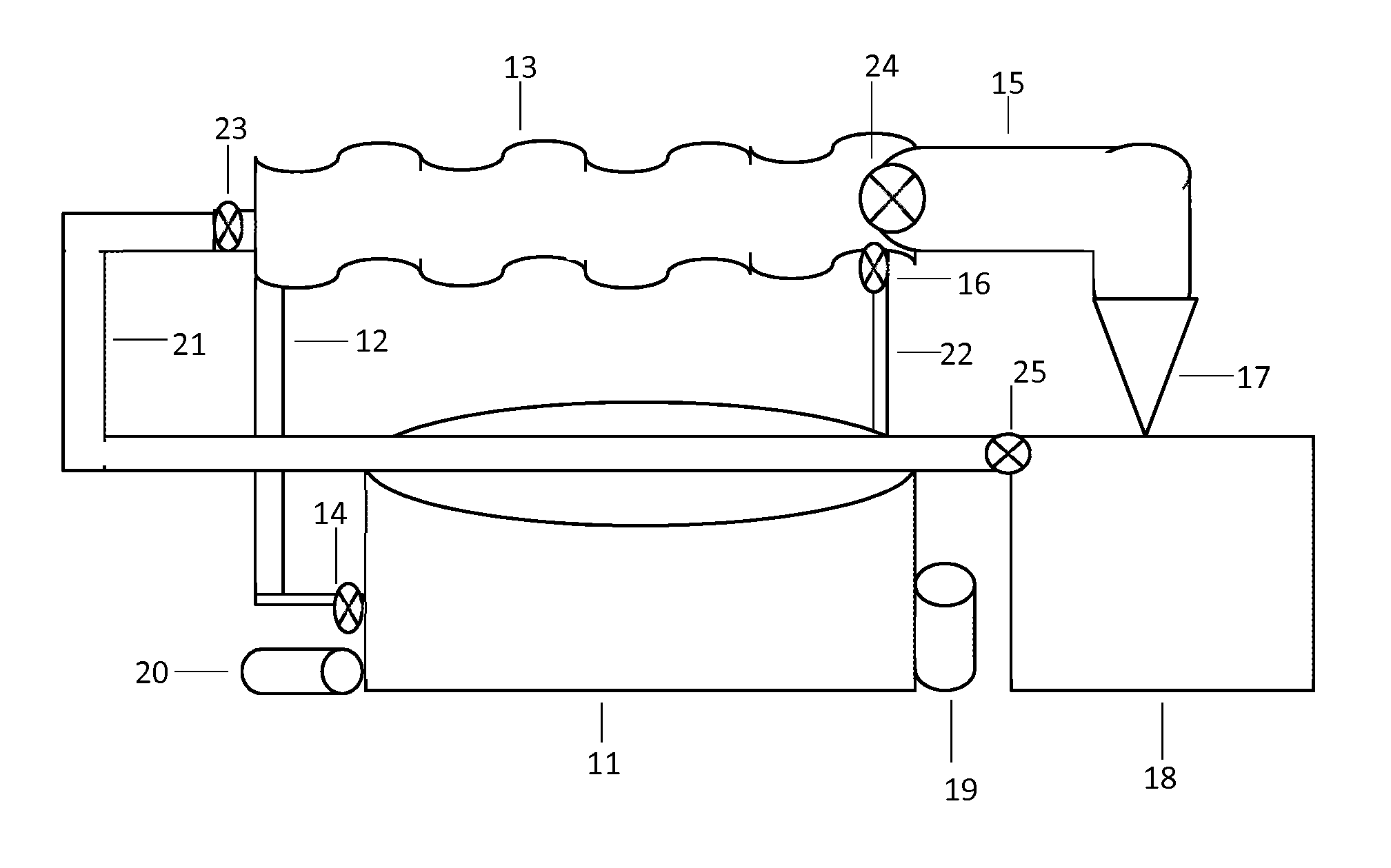Cultivation of sustainable aquatic organisms using multitrophic closed systems
a closed system and sustainable technology, applied in the field of sustainable aquatic organisms cultivation, can solve the problems of high cost, waste of water resources, and inability to meet the needs of replenishing water, and achieve the effect of limiting the need for replenishing water, and constant supply of waste-free water
- Summary
- Abstract
- Description
- Claims
- Application Information
AI Technical Summary
Benefits of technology
Problems solved by technology
Method used
Image
Examples
Embodiment Construction
1. Definitions
[0044]Algaculture, as used herein shall mean, the cultivation of algae, as defined herein.
[0045]Algae, as used herein shall mean, any species of algae, diatoms, and cyanobacteria which are autotrophic.
[0046]Aquaculture, as used herein shall mean, the cultivation of aquatic animals.
[0047]Biosecure, as used herein shall refer to one or more systems or components that serve to minimize or eliminate introduction of outside contaminants including living organisms, pathogens or debris.
[0048]Gasses, as used herein, shall refer specifically to dissolved oxygen and carbon dioxide
[0049]Multitrophic, as used herein shall mean, two or more living elements of which one is a food source for the other.
[0050]Nutrients, as used herein, shall mean the biological compounds needed in the growth of algae and aquatic animals
2. Best Mode of the Invention
[0051]FIG. 1 shows a side view of the best mode contemplated by the inventor of an integrated tank and photobioreactor system according to t...
PUM
 Login to View More
Login to View More Abstract
Description
Claims
Application Information
 Login to View More
Login to View More - R&D
- Intellectual Property
- Life Sciences
- Materials
- Tech Scout
- Unparalleled Data Quality
- Higher Quality Content
- 60% Fewer Hallucinations
Browse by: Latest US Patents, China's latest patents, Technical Efficacy Thesaurus, Application Domain, Technology Topic, Popular Technical Reports.
© 2025 PatSnap. All rights reserved.Legal|Privacy policy|Modern Slavery Act Transparency Statement|Sitemap|About US| Contact US: help@patsnap.com


